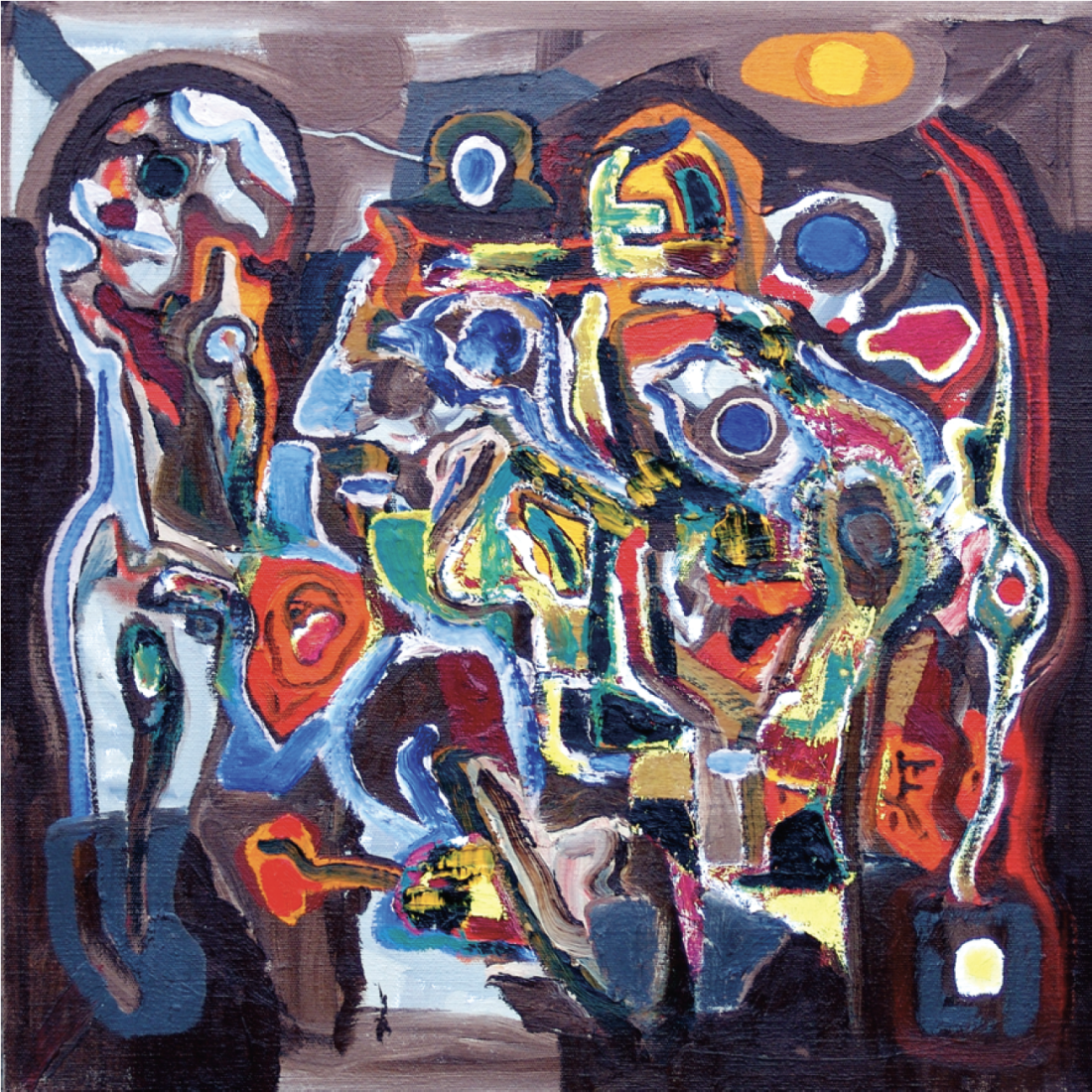Harold Klunder
In most of the seven self-portraits recently on exhibition at the Winchester Galleries in Victoria, Harold Klunder gives evidence of his psychological and existential struggles. Hinted at by the titles, his program is revealed through compositional devices that represent a matrix of trauma as well as a field of memory. The first is a tenuous but persistent grid system that physically and symbolically nails Klunder’s painting action to the surface of the canvas. Iconographically significant, though less formally important, the ominous distant skies above the high horizons and the occasional distant architectural silhouettes push Klunder’s efforts down into an oppressive earth/ground.

Harold Klunder, Sonic Vibrations (Self Portrait), 2006–2009, oil on linen, 30 x 20”.
The grid, what Lucy Lippard called an “emblem of modernity,” has resonated, often barely recognizeable, in the background of Klunder’s practice since his studies in the Art Department of Toronto’s Central Technical High School (CTS) where, in the 1960s, it was a teaching tool and aesthetic device. The program at CTS evolved from the Bauhaus teaching philosophy of artist/instructors such as Paul Klee, Herbert Bayer and Josef Albers; Klunder’s instructors, Dawson Kennedy, Virginia Luz, Charles Goldhammer and Donald Neddeau, employed grids to teach the science of colour, industrial design, typography and painting.
Iconographic meaning in Klunder’s grids can be traced through the work of several Canadian Modernists, in particular Kazuo Nakamura (also a graduate of CTS) and Frederick Varley. This tradition leads back to the German Romantic painter Caspar David Freidrich, whose occasional theme, known today as “the view through the window,” is perhaps the origin of the use of the grid-as-ground and its single unit in the cross/crucifix in Western art.
Klunder’s paintings in the 1970s were free-floating geometries; these can now be read as nascent grids in search of surfaces to inscribe. With his prescient move toward self-portraiture in the 1980s, the form coalesced onto and into the psychological ground/background of his practice. Today the grid is difficult to detect in Klunder’s paintings, perhaps it is now less psychologically necessary. Still, I believe, it continues to serve an important though subtle formal role: it is the Modernist armature of rationality that he attacks with his thickly layered textured colours.
In the painting On the Path Home (Self Portrait), Klunder’s large central self-portrait simultaneously rises from the ground of the canvas and floats from the earth of an anonymous farm field into an inarticulate space below the horizon. On the upper right, three towers loom from beyond the high, moody horizon. The self-portrait is pinned in place by horizontal and vertical lines that divide the canvas into four almost equal units. These taut wire-like lines are embedded into near secrecy in the texture of the paint. They are difficult to see only because Klunder’s efforts to break through the partitioning of the earth/ground as well as the pixilated canvas has overlaid the grid with a viscous, coloured mud. The oppressiveness of the grid is countered, though not overcome, by Klunder’s heroic efforts to break free by means of his searching brushes strokes of illuminating colour. A small figure in the lower left moves toward the canvas’s geometric centre, the shattered face looming from the ground, hinting at a young boy’s real and imagined fears as he walks home across a dangerous field in battle-scarred Holland.

Harold Klunder, Untitled, 2008 (Self Portrait), 2006–2008, oil on linen, 32 x 32”.
The diptych Atlantic, Pacific (Self Portrait), alternatively or additionally titled Ocean Crossing, 1952, might recall the anxieties of Klunder’s immigration to Canada at age nine. The high black sky above the deep blue that surrounds the two central self-portraits probably acknowledges the hallucinatory world of the sea at night. At the same time, the division between the two canvases intersecting the sky and the sea suggests a large hovering crucifix. The necessity of the double portrait below the arms of the cross might encompass a schizophrenia within the boy’s emotions, the remembered and still felt fears of living through the last years of WWII countered by the expected excitement of the new world he was escaping to. Throughout the totem-like portraits, small rectangles of colour and seemingly random alignments of brush strokes or colour edges both erect and dismantle grid systems.
Even without the spar and thrust of his brush at his textured colours, Klunder’s painting would anticipate an easier escape from his demons were he to abolish the grid and lower the horizon to allow his self-portraits to soar heroically. However, unlike Nakamura’s eventual escape from internment through the grid of an idealized landscape of mathematics, or Varley’s escape into alternate states of consciousness, Klunder appears to thrive on the endless existential conflict that his paintings both represent and act out. ❚
“Recent Works” was exhibited at Winchester Galleries in Victoria from October 29 to November 21, 2009.
Brian Grison is an artist living in Victoria.

